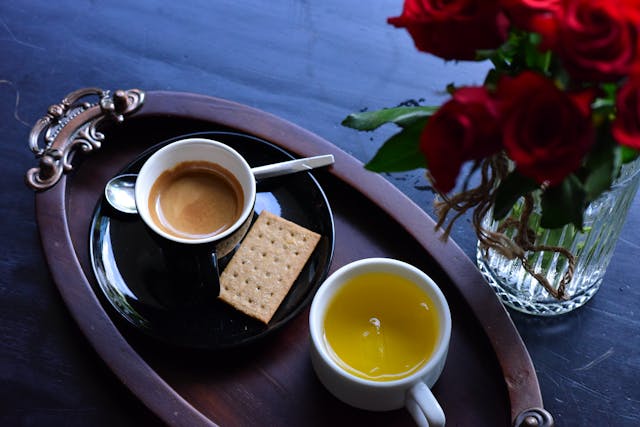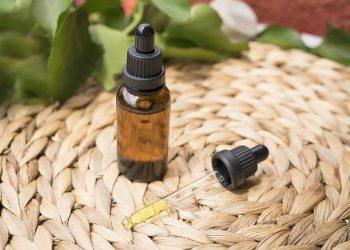The world of Japanese teas is as intricate as it is fascinating, offering a plethora of tastes, aromas, and experiences that are deeply rooted in the culture and history of Japan. Among these, gyokuro tea stands out as the pinnacle of refinement and flavour. This article is a voyage into the delicate universe of gyokuro, a tea revered for its unparalleled quality and delectable taste.
The Roots of Gyokuro Tea
Gyokuro is called the ‘jade dew’ and is famously regarded as the top Japanese tea. Gyokuro was first grown in the Uji region in the mid-19th century, and that area is often honoured as Japan’s tea capital. The cultivation and processing of gyokuro leaves differ from those of other types of tea. Three weeks before harvest, a unique shading method is started. It makes the tea more chlorophyll-rich, resulting in its vivid green look and its yummy, savoury taste.
Cultivation and Processing Peculiarities
Farming gyokuro tea demands a lot of attention and care every time the tea is harvested. When the plants are shaded, workers who are trained select only the best young leaves by hand. The leaves are steamed shortly after they are picked, so that they do not ferment and stay green and smell good. Drying is completed and then the leaves are tightly rolled, giving them their recognizable thin and needle-like shape.
When the drying is done, the leaves must be stored in a careful way to keep them fresh and help them maintain their quality. Keeping the leaves in a cool, dark place helps them mature slowly and get better in flavour.
The Incomparable Taste of Gyokuro
Experts often point out that gyokuro tea is known for its complex taste. You experience an initial sweetness, followed by the strong umami flavor after drinking. Because L-Theanine is an amino acid, it creates the sweetness, and shaded gyokuro contains much more of it. The tea feels fresh and grassy and is exceptionally smooth on the palate.
Always use water that is not too hot when you make gyokuro tea, as the heat should be different from what is used for other green teas. Gyokuro should be brewed at 60°C to 70°C so the taste stays balanced and there is no bitterness.
Brewing the Perfect Cup of Gyokuro
You get the best taste from gyokuro by making the tea slowly and with care. You should pick gentle water without any strong scent or flavor. You should preheat your teapot and cups to make sure the water stays at the right temperature. Put 1 teaspoon of tea into your small pot of 60-80ml water and pour in the hot water gently.
Make sure the tea leaves steep for 90 seconds when you first brew them to let their classic flavor come out. After your first serving, let the tea steep for around 30 seconds on each additional infusion and make the infusion time longer as you go. Tea lovers can enjoy and try all the flavors of gyokuro as they brew each round.
Health Benefits of Gyokuro Tea
Apart from how it tastes, gyokuro tea is also admired for its positive effect on health. Thanks to its high catechin content, it gives a wide range of health benefits. Antioxidants in gyokuro fight off free radicals in your body, lowering the risk of long-term illnesses and supporting overall health. Besides that, gyokuro contains many vitamins and minerals, including vitamin C, vitamin E, and L-Theanine, which helps with stress management and relaxation.
What’s more, drinking gyokuro tea combines caffeine and L-Theanine to offer a smooth and gradual increase in energy, without the shaky feelings that can come from coffee. This tea serves as a good option for people who need help concentrating, without the uncomfortable side effects.
An Emblem of Japanese Culture
Gyokuro means more than just spending a lot on tea; it represents the important skills and traditions that make Japanese culture unique. It is often given ceremonial treatment, which represents luxury as well as hospitality. When people drink gyokuro slowly, they can notice multiple flavors and give credit to the skill used to make it.
Offering gyokuro is a special custom, typically matched with Japanese ware and small bites to enhance its taste. When serving gyokuro, someone thanks their guests and enjoys a peaceful talk with them.
The Pursuit of Perfection
Both tea masters and enthusiasts always try to achieve the perfect taste in gyokuro tea. Farmers are always looking for ways to make their techniques better, including testing shading techniques, changing when they harvest or blending the teas in new ways. The dedication to making the best tea pushes the gyokuro tea industry, so every cup reflects the beauty of Japanese tea art.
Anyone wishing to fully appreciate gyokuro should make sure to get leaves that are grown and processed with respect for time-honored traditions. At authentic Japanese tea stores such as IKKYU, you can find gyokuro tea that is both of superior quality and genuine.
Conclusion
People are drawn to gyokuro because of its complexity and the traditions of Japanese tea. Drinking gyokuro carries you into the mist-shrouded farms of Japan, where you hear the stories of respect for tradition, refined elegance, and never-ending effort to achieve excellence. Trying gyokuro tea allows anyone, expert or beginner, to see the elegant balance of nature, skill, and art in the process of Japanese tea-making.
When the world seems rushed, drinking gyokuro tea lets you World History connect with the deep culture of Japan and once more shows why it is such a noble tea. A single cup of gyokuro goes beyond being a drink; it is a ritual of peace and a doorway to Japan’s grand heritage.







